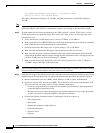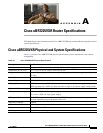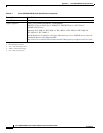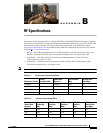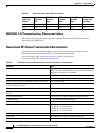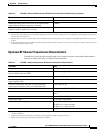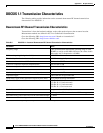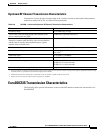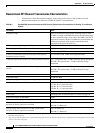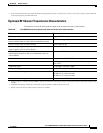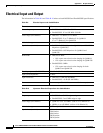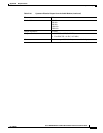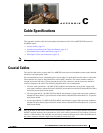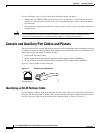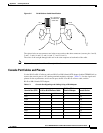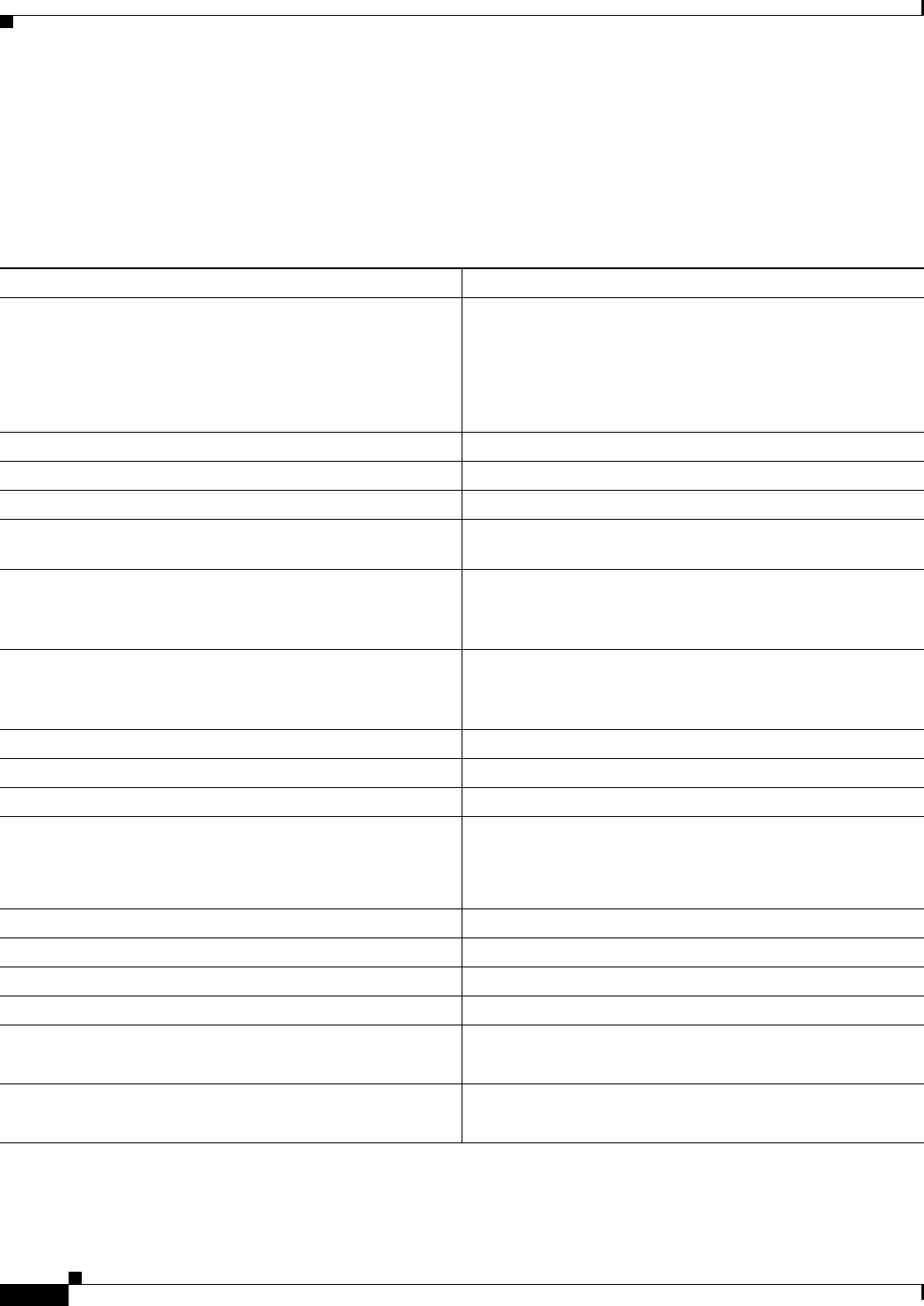
B-6
Cisco uBR7225VXR Universal Broadband Router Hardware Installation Guide
OL-17309-02
Appendix B RF Specifications
EuroDOCSIS Transmission Characteristics
Downstream RF Channel Transmission Characteristics
Transmission is from the headend combiner to the cable modem input at the customer location.
Measurement methods are defined in CENELEC 50083-7 documentation.
Table B-7 EuroDOCSIS Assumed Downstream RF Channel Transmission Characteristics for Analog TV and Sound
Signals
Parameter Value
Frequency range
1
1. For measurements shown, the normal downstream operating frequency band (except hum), impairments are referenced to the highest-frequency
PAL/SECAM carrier level.
Cable system normal downstream operating range is from
47 MHz to as high as 862 MHz. However, the operating range
for data communication is from 108 to 862 MHz. The use of
frequencies between 108 and 136 MHz may be forbidden due
to national regulation with regard to interference with
aeronautical navigation frequencies.
RF channel spacing (design bandwidth) 7/8 MHz, 8 MHz channels are used for data communication
Transit delay from headend to most distant customer ≤ 0.800 msec (typically much less)
Carrier-to-noise ratio in a 8-MHz band (analog video level) Not less than 44 dB
2
2. This presumes that the digital carrier is operated at analog peak carrier level. When the digital carrier is operated below the analog peak carrier level, the
carrier-to-noise ratio may be less.
Carrier-to-interference ratio for total power (discrete and
broadband ingress signals)
Not less than 52 dB within the design bandwidth
Composite triple beat distortion for analog modulated carriers PAL—Not greater than –57 dBc within the design bandwidth
SECAM—Not greater than –52 dBc within the design
bandwidth.
Composite second order distortion for analog modulated
carriers
PAL—Not greater than –57 dBc within the design bandwidth.
SECAM—Not greater than –52 dBc within the design
bandwidth.
Cross-modulation level Under consideration
Amplitude ripple 2.5 dB in 8 MHz
Group delay ripple in the spectrum occupied by the CMTS 100 ns over frequency range 0.5 to 4.43 MHz
Micro-reflections bound for dominant echo –10 dBc @ ≤ 0.5 microseconds
–15 dBc @ ≤ 1.0 microseconds
–20 dBc @ ≤ 1.5 microseconds
–30 dBc @ > 1.5 microseconds
Carrier hum modulation
3
Not greater than –46 dBc (5%)
Burst noise Not longer than 25 microseconds at a 10-Hz average rate
Signal level slope, 85–862 MHz 12 dB
Seasonal and diurnal signal level variation 8 dB
Maximum analog video carrier level at the system outlet,
inclusive of above signal level variation
PAL: 77 dBmicroV
SECAM: 74 dBmicroV
Lowest analog video carrier level at the system outlet,
inclusive of above signal level variation
PAL: 60 dBmicroV
SECAM: 57 dBmicroV



